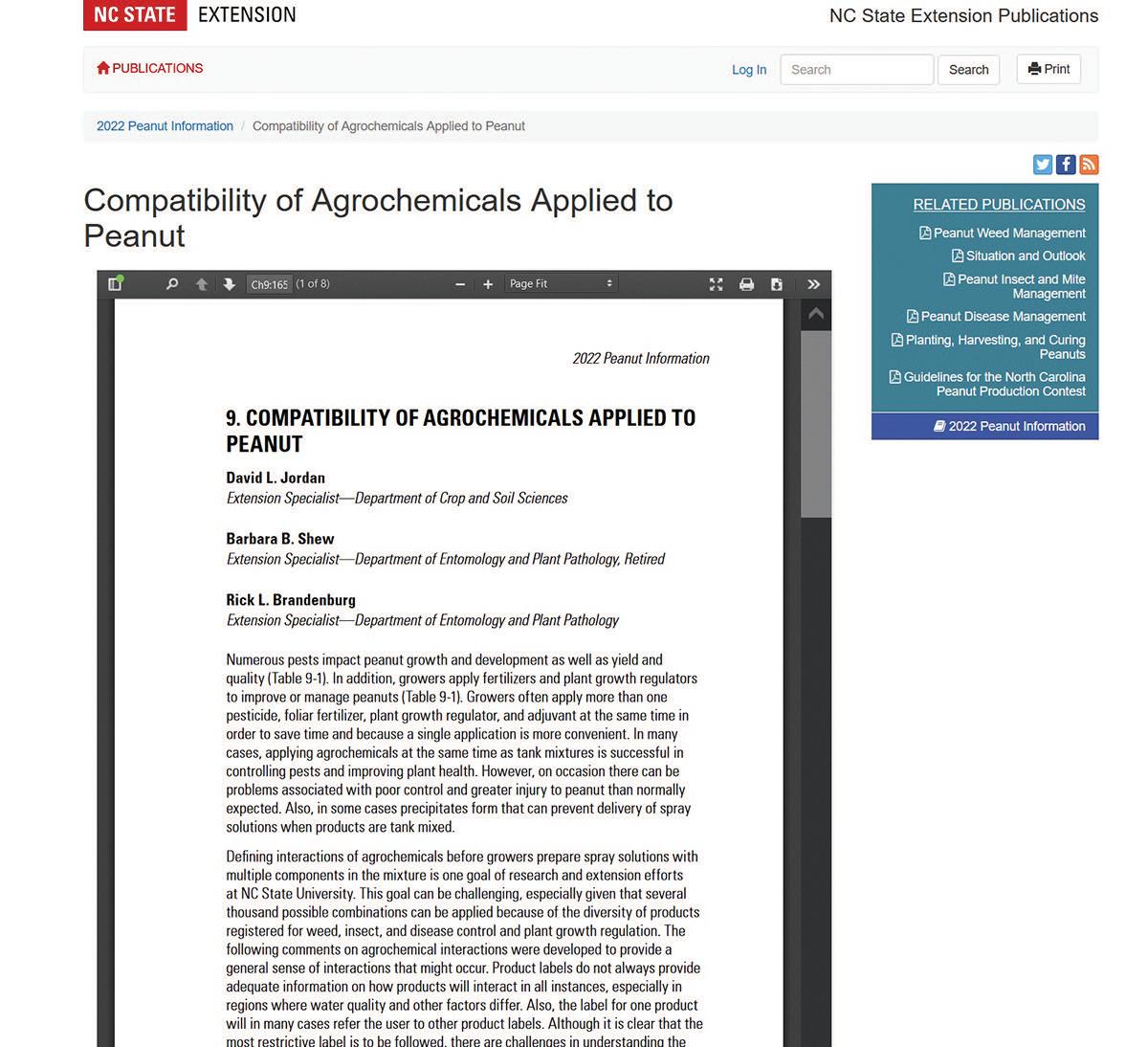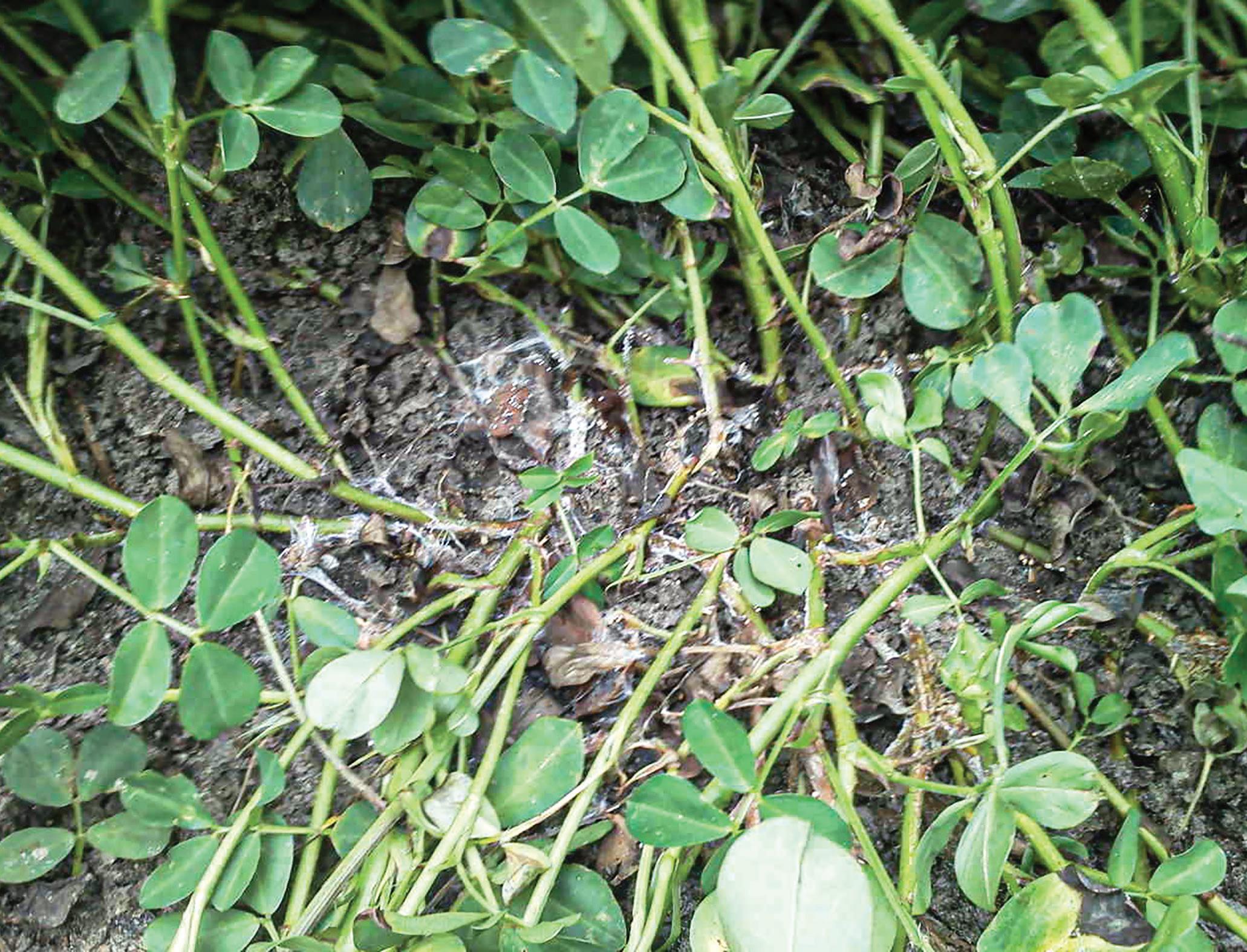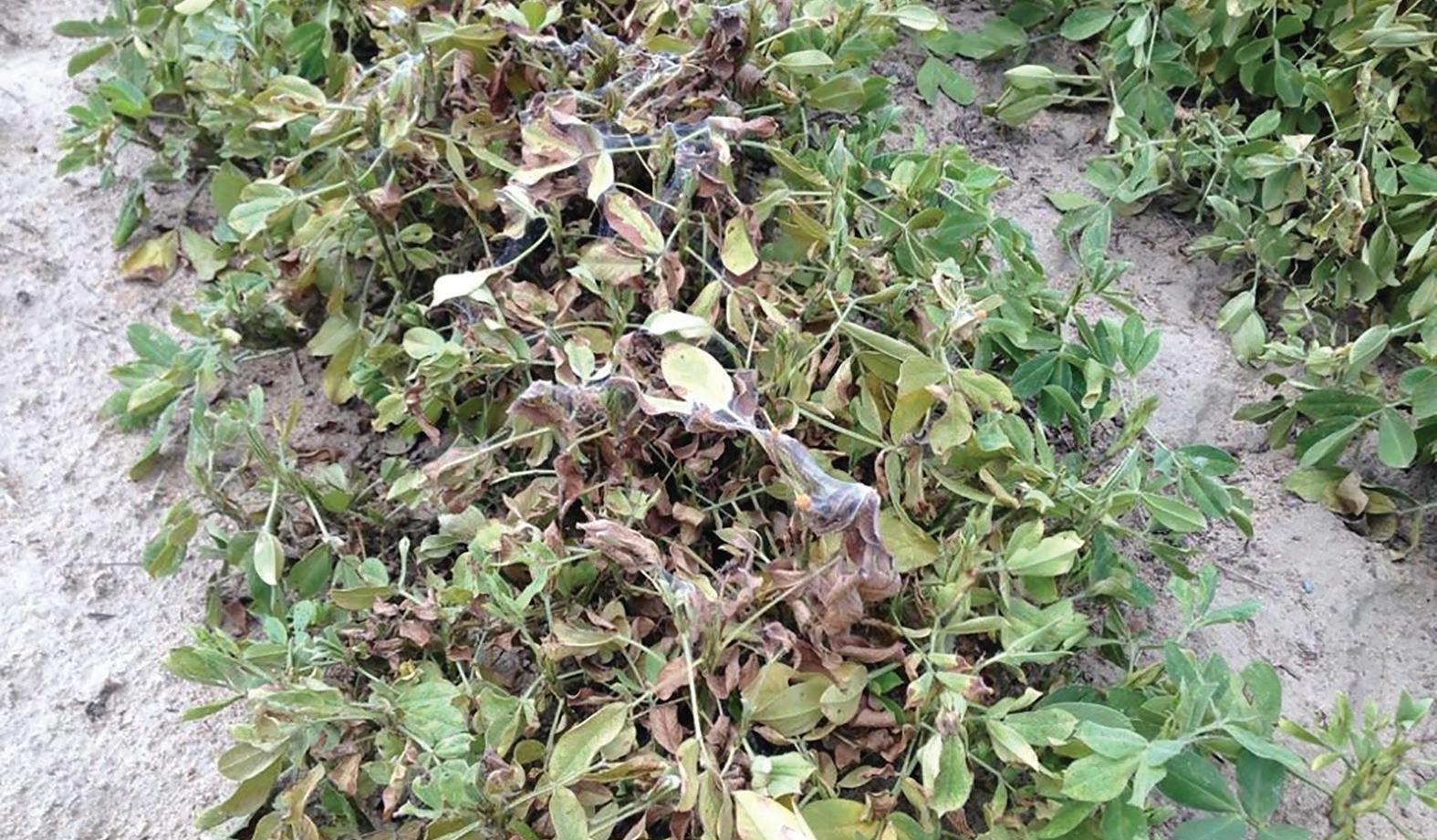
11 minute read
On-Farm Cover Crop Research
Early maturing varieties and reduced seeding rates still produce enough biomass for improved soil heath and pest suppression.
Just as planning for planting next year begins as soon as the crop is harvested, planning what will happen to fields in the winter begins while the current crop is in the ground.
Cover crops are those grown to benefit the following crop as well as to improve the soil. They help protect the soil, feed the soil eco-system, increase soil organic matter and supply nutrients to the following crops. Selecting the right cover crops for your operation can improve yields, soil and water conservation and quality – and your bottom line.
Properly managed cover crops protect the soil surface from water and wind erosion and remediate soil compaction. Growing plants feed the soil ecosystem by exuding compounds from their roots — sugars, organic acids, amino acids and more. These materials glue soil particles together into aggregates, improving soil structure. Decomposed plant residue becomes soil organic matter that provides food for soil organisms — bacteria, fungi, arthropods and others —and increases the water storage capacity of the soil.
Reduce Pests, Improve Soil Health
Cover crops can improve soil fertility in several ways. Legumes and their associated bacteria produce nitrogen that becomes available to following crops as plant residue decomposes. Unused nutrients from the previous crop are taken up by the cover crop, reducing leaching losses. Deep-rooted cover crops scavenge nutrients from deep in the soil. These nutrients become available to crops the next growing season as the residue decomposes.
Pest pressure in the subsequent crop can be reduced with the use of cover crops. Weed growth is suppressed on the soil surface by thick plant residue that blocks sunlight and physically slows weed seedling growth. Some cover crops produce allelopathic chemicals that inhibit the growth of weed seedlings. Others suppress parasitic nematodes by repelling, confusing or starving them. Cover crops can help break the “green bridge” over the winter reducing early pest pressure in the following crop. However, some cover crops can support nematodes and diseases harmful to following crops, so care must be taken to select the right cover crop for the cropping system.
On-Farm Trials
In 2021, Alabama Extension soil scientist Audrey Gamble planted cover crop demonstrations on five farms throughout Alabama. The goal was to determine the highest biomass producer and identify varieties that would work
Wrens Abruzzi is a commonly planted variety of rye in Alabama.
in different growing situations.
Gamble, who is also an associate professor in the Auburn University College of Agriculture’s Crop, Soil and Environmental Science department, says they planted each demonstration during the last two weeks of October. The farms were in Autauga, Geneva, Henry, Lawrence and Lee Counties.
Cover Crop Demos
“Most of our cover crop trials are planted on research stations,” Gamble says. “But I wanted to plant these on-farm demos so farmers could gauge what cover crops might work on their own farm.”
Researchers planted all of the demonstrations with a no-till drill. Producers and the team did not fertilize cover crops as part of the experiment. However, chicken litter was applied at the Geneva County location in early spring.
Gamble’s cover crop demonstrations offered the following lessons: ■ Early maturing varieties shine in a short growing window. Examples of early maturing varieties include FL401 rye, Legend oat and AU Sunrise crimson clover. ■ Low seeding rates of small grains can be high biomass producers. When planted with a no-till drill, 30 pounds per acre of rye produced comparable biomass to 90 pounds per acre across locations. Gamble says cutting seeding rates is a great way to save money on cover crops. Increase rates by about 50 percent when broadcasting seed. ■ Patience is a virtue when it comes to legumes. Across the state, Gamble says legume cover crops looked puny until mid-March, but rapid growth began in early spring. AU Merit hairy vetch was particularly useful for providing a solid ground cover to smother winter weeds.
Any winter small grain, particularly rye, is most often used for peanuts. Across locations at termination, FL401 produced more than 5,000 pounds per acre of biomass and Wrens Abruzzi produced approximately 3,000 pounds per acre of biomass.
Gamble says it is tough to tell a difference between rye planted at 30 pounds per acre and 60 pounds per acre.
“Regardless of the seeding rate, these cover crops produced approximately 3,000 pounds per acre of biomass at termination. This suggests that producers can save money on seed costs without sacrificing biomass production,” she says. For more information on cover crop use in Alabama, visit the website at https://bit.ly/3toe7nw. PG

FL401 rye is an early maturing variety.
Cover Crop Biomass Production
Variety And Planting Rate
Wrens Abruzzi Rye - 90 lbs/acre
Wrens Abruzzi Rye - 60 lbs/acre
Wrens Abruzzi Rye - 30 lbs/acre
FL401 Rye - 30 lbs/acre
Trical 342 Triticale - 30 lbs/acre
Cosaque Oat - 30 lbs/acre
Legend Oat - 30 lbs/acre
Wyo Winter Pea - 40 lbs/acre
AU Merit Hairy Vetch - 10 lbs/acre
AU Sunrise Crimson Clover - 10 lbs/acre
Dixie Crimson Clover - 10 lbs/acre
Wrens Abruzzi Rye + Dixie Crimson Clover Mix
Dry Weight Biomass
2980
3200
3160
5370
2640
2640
2810
1800
2520
2190
3140
3160



PeanutPointers



Questions On Pesticide Compatibility
As we move into this point in the season, we need to address issues associated with weeds, insects and disease. In many instances, timing of control for multiple pests coincides well enough that pesticide tankmixes can be effective. When we consider pesticide compatibility, three possible issues come to mind. First, does the mixture settle in the tank? This can be a major issue that takes time to resolve, and, in some cases, nozzles and other parts of the sprayer have to be replaced. The pesticides in question, and other agrochemicals, the formulation, order of mixing, agitation and water quality can affect how well products go into solution and stay in solution.
Secondly, does the mixture cause greater peanut injury? In some cases, this does occur, but the magnitude of increase is relatively minor and not yield limiting. In other cases, a tankmix partner can reduce injury. Basagran and Storm applied with Gramoxone is a good example.
The third issue we might face with tank mixtures is the impact on control of pests. Applying multiple contact herbicides together generally does not affect weed control in a negative manner, and, in fact, these mixtures often increase the spectrum of control and can help control larger weeds.
In contrast, applying contact herbicides with systemic herbicides that control grasses (clethodim-containing products, for example) can result in less grass control but no reduction in broadleaf or sedge control. Sequential applications can get around this negative interaction, but no one wants to make applications three or four days apart. Increasing the grass herbicide rate can often get us where we need to be for grass control by these mixtures.
As we broaden out to mixes of herbicides, insecticides and fungicides, we can see some cases where a fungicide like chlorothalonil can reduce grass control with clethodim products. In the vast majority of cases, insecticides and herbicides, as well as fungicides and insecticides, are compatible when it comes to pest control. However, the adjuvant used can make a difference. For example, if you are trying to control leaf spot and stem rot, it is important to get some of the fungicide down to the base of the plant. Does an adjuvant used for a herbicide keep the fungicide from reaching the area where soilborne pathogens are active?
DAVID JORDAN North Carolina State University Extension Agronomist
When it comes to agrochemical compatibility, there are many possible combinations, and it is difficult to research all of them. It is also seldom that the question is about two products in the tank. Three, four and five-way mixtures are the norm now. Before you put that many together, make sure you have an idea about how the products will behave in the tank. Try to get a feel for the potential impact on peanuts and the impact on the pests in question.
This chapter in the North Carolina Peanut Production Guide can help you make a decision on co-applying pesticides, which can be found at this website: https://bit. ly/3n6cGGs. Given all of the products on the market, this chapter seems general, but it is the start to coming up with a reasonable answer to what can be a complicated question – what will happen if I mix these products?

Protect The Crop From Disease
We seem to have mimicked last year’s planting season. As I write this pointer, we are wrapping up planting, which has stretched out later than what we would have liked. This was mainly due to the scattered showers that were much needed and a few replanting situations in some KRIS BALKCOM fields where stands weren’t Auburn University sufficient. We have been expeExtension Specialist riencing some above-average temperatures this season already. We have seen a good bit of Aspergillus crown rot
PeanutPointers

on peanut seedlings, which is related to these hot and dry conditions.
We also know that when we experience hot weather then receive moisture, we seem to have more white mold. Therefore, I know that our expenses are high this year, but we must be on guard and protect our crop from pests and diseases.
Try and stay on top of the postemergence herbicide applications and not allow those pesky weeds to get too big before spraying. Also keep in mind with these dry conditions, it makes the uptake of the chemicals more difficult. Therefore, try to be timely with these applications. I know many of you may be finished with these applications, depending on when you planted, but many of you have some late peanuts this year that this will apply to.
Remember what we have said about calcium levels and gypsum in a dryland situation.
Lastly, everyone please take the necessarily precautions for yourselves and your help in relation to the extreme heat. I hope everyone stays safe and has a good season to come.
Aim For Consistent, Timely Scouting
The peanut crop in Georgia has already gone through some tough times with the high heat and lack of widespread rain in late May and June. So, what do you do if this extreme weather continues through July and August? I would encourage growers to have all peanut fields scouted on a weekly basis.
SCOTT MONFORT Consistent and timely scout-
University of Georgia ing is a key management prac-
Extension Agronomist tice. Scouting each field provides growers with necessary information to stay on top of potential disease or insect problems. If these extreme conditions persist into July
PeanutPointers
and August, non-irrigated acres are at an increased risk to have problems with lesser cornstalk borer and spider mites. Catching a lesser cornstalk borer or spider mite outbreak early is vital to minimizing their impact on the crop. Also, do not apply pyrethroids in non-irrigated peanuts as it will increase your risk of spider mites.
Irrigated acres are no different when it comes to the importance of routine scouting. Like with non-irrigated acres, being informed of early outbreaks of disease and insect issues can significantly reduce their impact.
A crop scout is only part of the management strategy, however. Disease management on peanut starts with proper cultural practices like crop rotation and a strong fungicide program. A successful fungicide program should start before the disease issue develops. It should then change or be adjusted if necessary, as when/if disease breaks through a select fungicide program, allowing the grower a chance to strengthen his disease management before a major problem develops. Lastly, growers need to monitor soil moisture in irrigated peanuts, no matter how old, to make sure the crop does not suffer during extremely dry and hot conditions. And, like always, reach out to your local county agent with questions.
Check The Underside Of Leaves
Disease and insect management will be important as we move into the second half of the growing season. Although it is not a common problem in the Southwest, scouting for spider mite infestations may be important this season as weather (hot and dry) will likely be favorable. Spider mite control often requires at least two applications of miticides, as the efficacy of miticides is not the best for killing eggs unless the infestation is at a very early stage. In addition to the weather-driven occurrence, spider mite outbreaks may happen following insecticide applications, especially if your fields are near infested corn fields.
An insecticide should be used only when it is necessary and needed for insect control. Scout the undersides of leaves in July and August. The infestation starts around the boarder of the peanut fields and moves into the fields.
Common diseases found in the Southwest are pod rots, early and late leaf spots, Aspergillus crown rot and Sclerotinia blight. Research shows that a preventative fungicide application is more effective compared to the curative fungicide application after the observation of disease symptoms. However, weekly scouting is very important. Check and record severity of disease infestation, and look for incidence of new disease(s) if any.
EMI KIMURA Texas A&M AgriLife Extension State Extension Peanut Specialist






